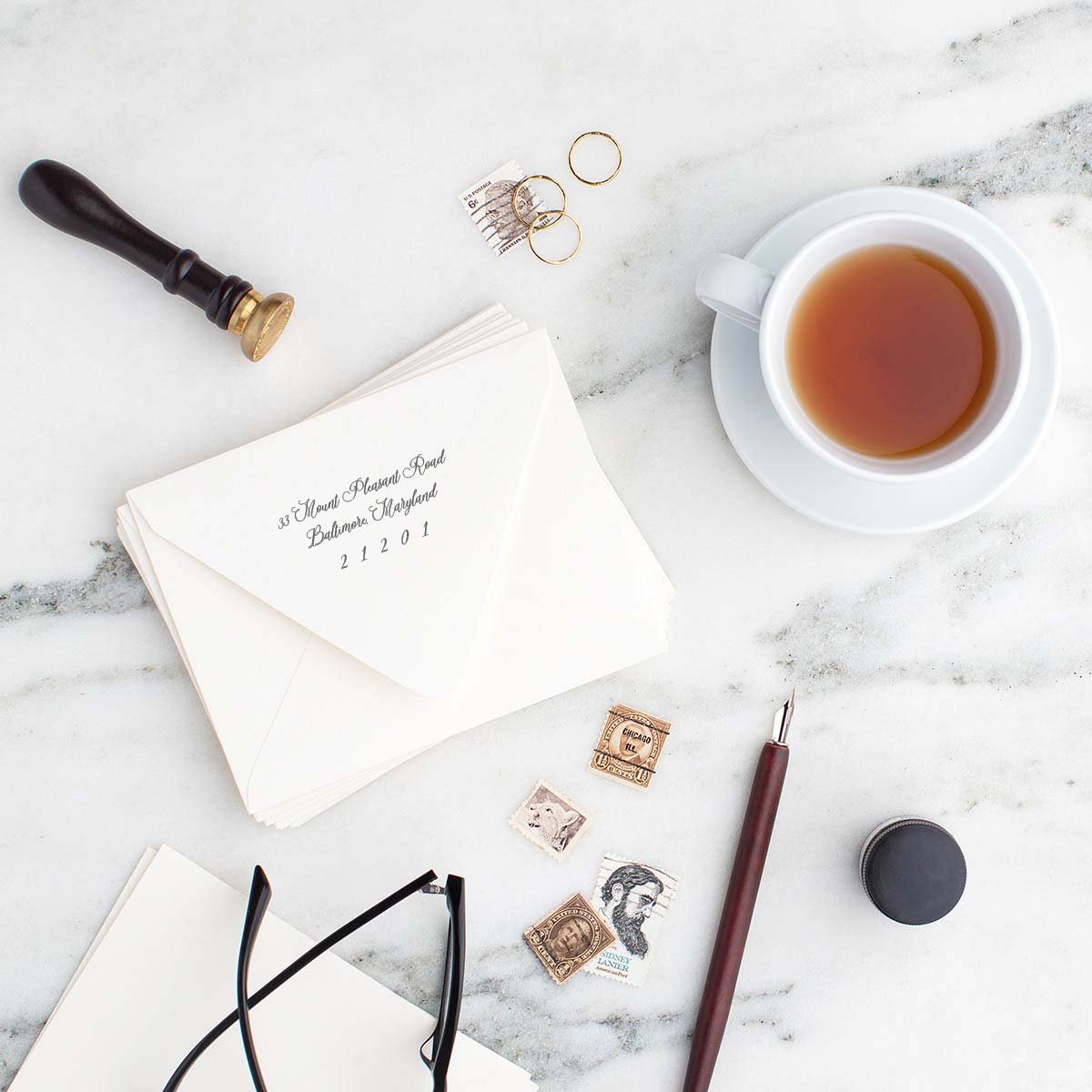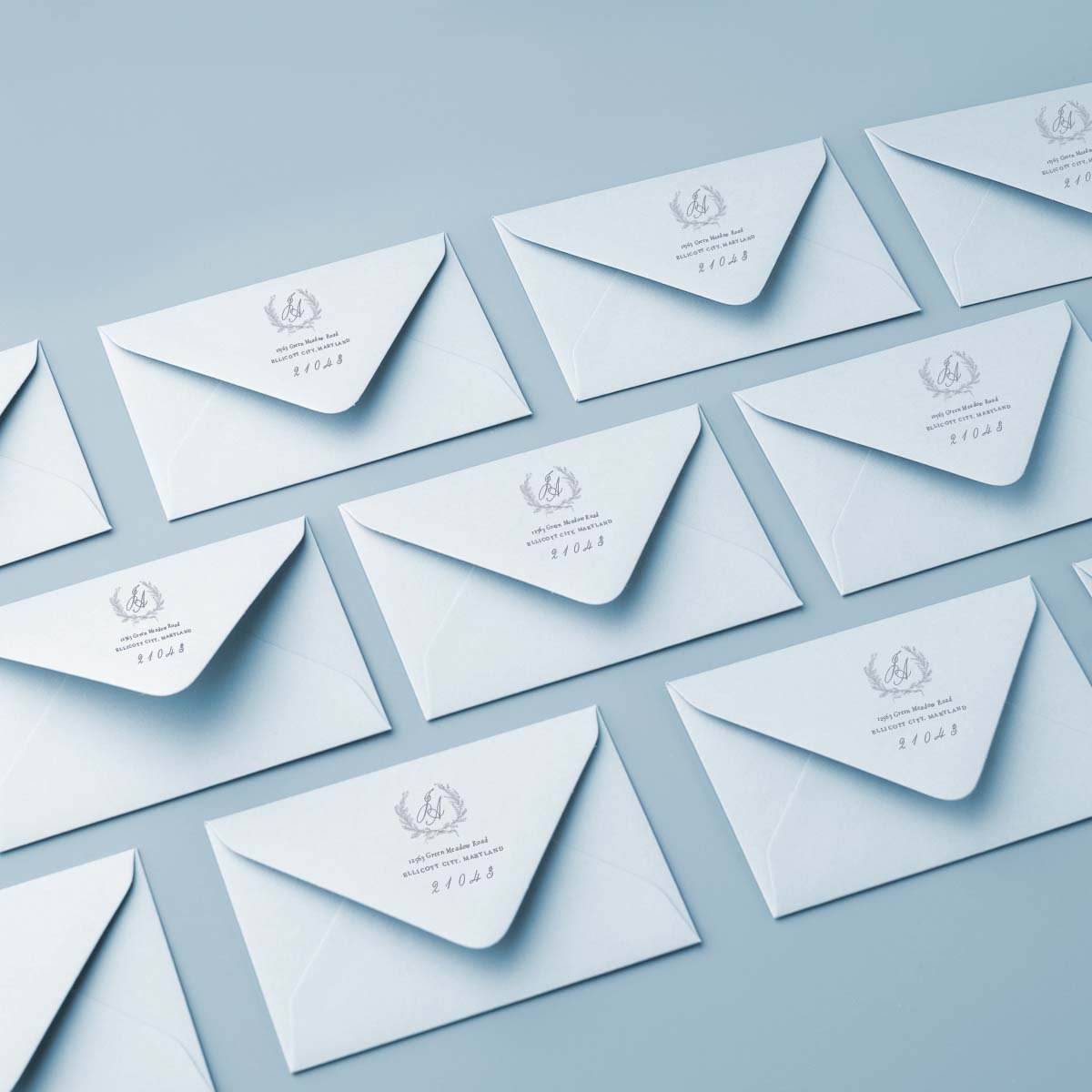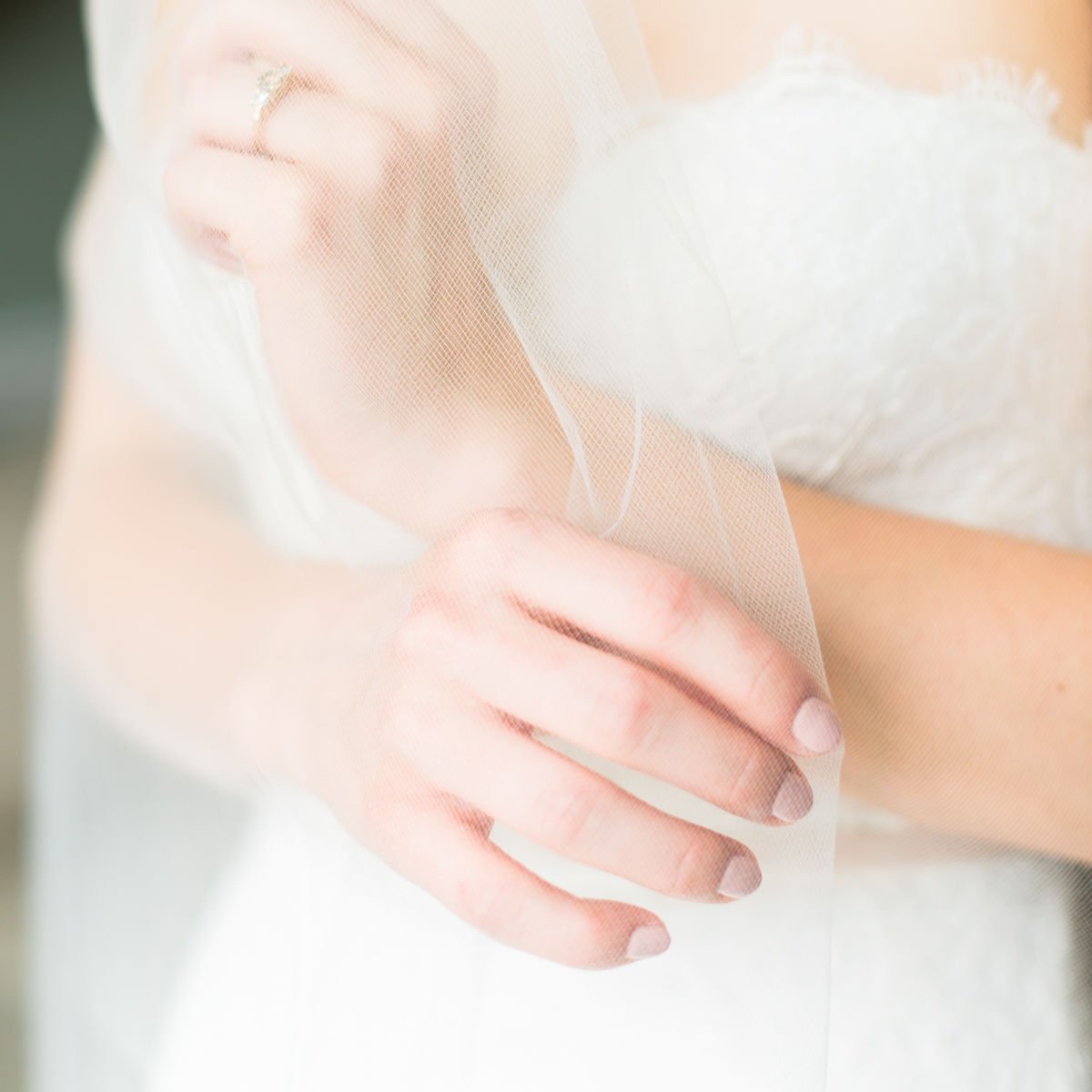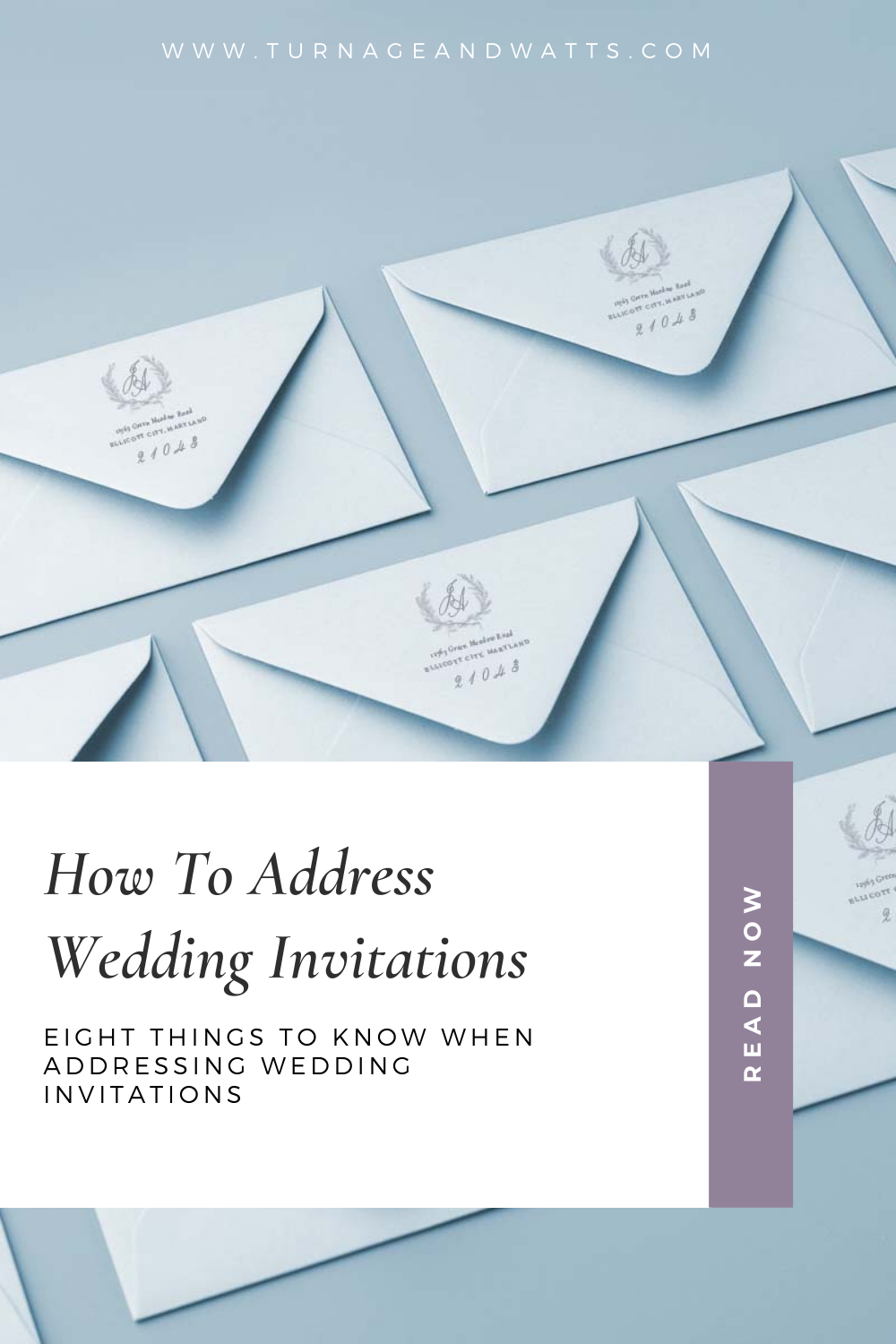When addressing your wedding invitations, it’s important to do so properly. In fact, we suggest figuring out how you will address each guest as you are putting together your guest list. That way, whether you are addressing them yourself, having them printed digitally, or having a professional calligrapher address them for you, you will be prepared not to make an etiquette faux pas.
If you’re stressed out by the idea of unintentionally offending one of your guests, don’t worry! In this post, we’ve compiled eight basic guidelines you should remember when addressing invitations to your guests, as well as five tips for addressing guests with titles.
Tips for Addressing Your Wedding Invitations
-
Never use any abbreviations on your invitations, with the exception of Mr., Mrs., and Ms. Rather, make sure to spell out each guest’s full, formal name. If you prefer to be traditionally proper, you can take this a step further and include full middle names. However, this is not necessary.
Example: Mr. and Mrs. Rene Albert Smith, junior
(Yes, “junior” and “senior” should be lowercase.)
Example: Doctor and Mrs. Edward Kenneth Smith
-
The names of streets, apartments, and states should also be spelled out. Additionally, all numerals under 10 should not be given numeric symbols, but have their names spelled out.
Example: One North Platt Street, Washington, District of Columbia
Example: “P. O. Box” should be “Post Office Box”
-
Adults who are not romantically involved, but live together (example: roommates) should each receive their own invitation. Children over the age of 18 who still live with their parents should also receive their own invitation. Conversely, if you’re addressing an unmarried couple who lives together, there is no need to send them individual invitations—just send one, addressed to the couple.
-
Pay attention to unique family situations. It can be difficult to know how to properly address modern families. Here are a few examples:
Girl under 18: Miss Karen Elizabeth Smith
Woman over 18: Ms. Karen Elizabeth Smith
Widow: Mrs. David Allen Smith (or Mrs. Karen Jones Smith)
Divorced woman: Ms. Karen Jones Smith
Married couple, when just the wife is a doctor: Doctor Karen Smith and Mr. David Smith
Married couple, when both are doctors: The Doctors Smith or The Doctors Robert and Elizabeth Smith
Gay couple, different last names: Mr. David Smith and Mr. John Lee
Gay couple, same last name: The Messrs. David and John Smith
Lesbian Couple, same last name: The Mesdames Karen and Lisa Smith
-
There are differences in usage between Mrs., Miss, and Ms. While “Mrs.” is used before the last name of a married woman, “Miss” is traditionally used as a title for an unmarried woman. “Ms.” became popular during the women’s movement in the 1970s. It was created as a title that does not assume marital status. For etiquette purposes, it is at your discretion to determine which title your guest will prefer.
-
Traditionally, guests mail responses to the parents of the bride, or the host(s) of the wedding. Today, many brides prefer to handle responses themselves. In these cases, use the bride’s address.
-
Typically, the return address on an invitation does not include both the bride and the groom’s names. But, if that is something you would prefer, proper etiquette is to present the couple’s names on separate lines. As another option, you can use a hyphenated title such as “The Smith-Dolan Wedding.”
-
Always carefully consider your audience. If you decide to address your invitations in a less formal manner, it’s suggested that you go through your list to identify any “etiquette sticklers” —and be sure to address their envelope according to what is traditionally proper.
Tips for Addressing Guests with Titles
It is customary to use social titles on formal wedding invitations, and when addressing envelopes. Professional titles should be written out in full. However, an abbreviation is acceptable if the title makes the line too long to accommodate the person’s name.
-
Physicians, veterinarians, and dentists use “Doctor,” while members of the clergy use their religious titles. These titles may be abbreviated to “Dr.” and “Rev.,” respectively, if there is not enough room on the line.
-
Professional certifications such as “CPA” and business titles such as “Esquire” are not used on wedding invitations and announcements. Social titles (Mr., Mrs., and Ms.) are used instead.
-
Educational degrees such as “Ph.D.” are also not used. If the person is known by “Doctor,” then it is fine to use the title “Doctor John Smith,” but not “John Smith, Ph.D.”
-
When addressing multiple individuals, including an individual with a title, then the individual with the title is listed first. For example, “Doctor/Judge/Reverend/Colonel Sandra Smith and Mr. Russell Smith.” If the length of the title and the name are long, you may need to use two lines. In these cases, use the first line for the person with the title; the spouse’s name will go on the second line, preceded by “and”. Again, if both are doctors, use “The Doctors Smith,” “Drs. Sandra and Russell Smith,” or “Doctors Sandra and Russell Smith.”
-
All military titles should be written out in full, and never abbreviated. If both guests you are addressing are in the military, then list the higher-ranking officer first.
How you address your wedding invitations matters! It may feel like a lot to think about as you are planning your celebration, but once the day arrives you’ll be left with the overwhelming happiness of having all the people you love in one place. We at Turnage and Watts want to help you with this important stage of your planning process! Reach out to us, and we can talk about how we can put together the most artful invitation suite for your guests to behold.
Photography by @socialsquares



